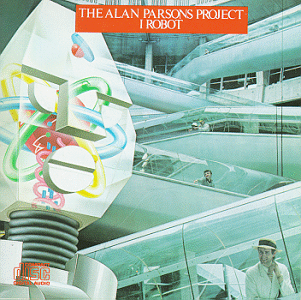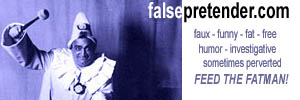Considerable Sounds: Music That Matters
"The more artificial taboos and restrictions there are in the world, the more the people are impoverished." - Lao-tzu, Chinese philosopher, founder of Taoism -
Molecular Mysticism and The Music of the Spheres
The musician integrates into the social fabric, but is not of it. Art simply does not exist unassailed by social forces and the material world. One must turn inward in a process that is both personal and universal, emerging in the end outwardly via art. Music requires that it's performer be completely centered, concurrently maintaining a delicate balance between self and selfless. These concepts are not mutually exclusive. There are direct parallels between the story of the Zen Archer and the musician. One must know, exactly who and where one is in the cosmogony, have accumulated a vast array of cognitive content, and honed variety of techniques and resources. Yet the creation of art then requires abandonment of all of this to the moment. The finest musicians serve the music. The essential musician becomes the music.
This is, perhaps, the largest struggle for the aspiring artist. The question of "self-consciousness" creeping into the situation. The answer is found within.
"One's essence is inherently complete." - (The Zen Teachings of Mazu.)
As one goes deeper inward, answers become apparent and beauty becomes simplicity. Isn't that what you hear in a great jazz solo? A completeness that is both compelling and fulfilling. This state is always present and available, yet elusive if deliberately sought.
For all those who stood up and were counted
For all those for whom money was no motive
For all those for whom music was a message
I want to thank you for making me
A little more sure
A little more wise
And courageous
So goes the opening lyrics to Music Matters, by Faithless. Enjoy the video.
It is possible lose one's self in the ethereal resplendence of this piece, Cass Fox's sensual vocals, and Maxi Jazz's dub-rap poetry just coexist nicely. Why do you suppose the 'simple' things in life are always the most rewarding?
Ah, But I digress, one can not speak of music that matters without talking about The Plastic People Of The Universe, who perfectly exemplify the essence of this article's title.
Hope is a feeling that life and work have meaning. You either have it or you don't, regardless of the state of the world that surrounds you.
-Vaclav Havel
Shortly after the close of the second World War, Czechoslovakia's Communist Party, with support from the Soviets, took over the reigns of government. (February, 1948.) Forty years of totalitarianism followed. The regime took over privately-owned businesses and property, removed the Catholic Church, and suppressed all forms of art deemed threatening to the party.
In response, playwrights, filmmakers, and musicians began creating works with concealed anti-Communist morals. The film school that the soviets revamped to produce propaganda (Filmová a Televizní Fakulta Akademie Múzických Umění v Praze) instead created movies with "Aesop like" commentary criticizing the regime. Sadly, these hints weren’t subtle enough, and almost all of the FAMU works were locked away in a vault. Even today, they are highly regarded as brilliant works of art. Humanities were subdued and generally suppressed during this period.
Prague Spring
Alexander Dubček lifted censorship of the press and arts when he came to power in 1968. Against the advice of his party, he adopted a program guaranteeing basic rights that were previously suppressed, such as freedom of speech, travel, assembly, and religion. These new freedoms threatened the regimes of the surrounding countries in the Warsaw Pact. 175,000 troops–23 divisions of the Soviet Army–invaded Czechoslovakia in late August. The people put up some serious passive resistance, changing street signs to confuse tanks , etc, but within three days, Dubček was deposed. Protests continued; the most sensational one I'm aware of being the suicide of Jan Palach, who was a philosophy student in Prague. He doused himself in kerosene and set himself on fire in the center of Wencelas Square.
What Do Frank Zappa and Captain Beefheart have to do with the Velvet Revolution? Much. Although censorship was fairly effective with printed media, the appetite for music could be satisfied by radio stations outside of the Warsaw Pact nations. Their music, along with the Velvet Underground, in particular represented personal and artistic freedom; inspiring the Plastic People of the Universe, who became a catalyst in the revolt.
Normalization
The country underwent a process of “normalization,” a forced return to the totalitarian ideals. The government was purged of all reformist elements, and the freedoms that Dubček had secured were all taken away. Rock ‘n roll was viewed as a mouthpiece for the dangerous influence of western ideals. Almost all of Prague’s music clubs were closed down, and bands were forced to change their sound and appearance. This is when the Plastic People of the Universe distinguished themselves as the most important rock ‘n roll band in Czechoslovakia. The Plastics embodied the nonconformist spirit, they provided a rebuttal to the communist regime’s censorship, yet all they wanted to do was write some music.
The Plastics’ psychedelic rock draws influences from the John Cale, Lou Reed, the Velvet Underground, Captain Beefheart, and Frank Zappa’s Mother of Invention, (the group took their name from the Zappa song “Plastic People.) When they refused to comply with new music regulations, the government revoked the band’s professional license. They were prohibited from staging paid performances, and their equipment was confiscated.
The history of liberty is a history of resistance. ~Woodrow Wilson
Accidental Revolutionaries
The Plastic People of the Universe continued to perform as amateurs anyway, with cheap used instruments and homemade amplifiers made from old transistor radios. The Plastics were banned from Prague in June of 1972, after a downtown concert ended in a fight between drunk militiamen and fans.
The band carried on by performing in the Bohemian countryside in secret. Playing in farmhouses and barns in the forest, the locations of which were disclosed solely by word of mouth. Often, the police showed up and canceled the performance before it even started. On one such occasion in March of 1974 the Plastic People arrived at their undisclosed location only to find the authorities waiting for them. Thousands of fans showed up, and hundreds were beaten by the police. Students were arrested, and names were collected by authorities. Those on the "list" were expelled from school. The incident became known as the Češke Budovice Massacre. Two years later, the Plastic People organized a music festival of underground Czech musicians. Members of the band were arrested. They spent up to 18 months in jail, while their manager spent more than 8 years of his life in there for his unwavering belief in rock music.

Václav Havel penned a manifesto called Charter 77 with a diverse group of Czech artists in response to the wrongful imprisonment of band members. This document would become an internationally-recognized defense of civil rights, and would land Havel in prison.
Chapter 77 did not directly criticize the regime , but it put forward a defense of human rights in light of agreements Czechoslovakia had signed in previous years (the Final Act of the 1975 Conference on Security and Cooperation in Europe, part of the Helsinki Accords for instance). Havel said that the Plastics were defending "life's intrinsic desire to express itself freely, in its own authentic and sovereign way", which is as close to a perfect explanation of not only democracy, but also rock and roll, as has ever been put forth by anyone.
Charter 77 would foreshadow the Velvet Revolution twelve years later.
The Chezk Republic has distinguished itself as a place unlike any other. Where else in the world would an artist have run a country? Havel’s story is beyond extraordinary. A playwright turned activist, turned president; who claims the Zappa/Beefheart's live document "Bongo Fury" is one of his favorite recordings (Can you name a single other leader of a nation who would admit to even hearing this album, let alone have a prominent position in their collection?) I recently finished his memoir, To the Castle and Back, translated into English by former Plastic People vocalist Paul Wilson. In the book, Havel explains that he had never aspired to be a politician, let alone a president:"I hadn’t prepared myself for a presidential role from my schooldays the way American presidents do… In the end what probably won me over was the appeal to my sense of responsibility. You can’t spend your whole life criticizing something and then, when you have the chance to do it better, refuse to go near it."
Lou Reed with President Havel

Frank Zappa become a cultural Attaché despite protests from the U.S. Government.
Many rock bands sing about revolution and change, but how many ever have had such a direct hands on effect? The Plastic People openly defied a totalitarian regime in the name of art. They did not seek to become revolutionists, rather; they simply wanted to create music. They and their fans, believed enough in the importance of the music to accept the role of the revolutionary.
There exists more than a bit of poetic irony to think that A state that censored and suppressed art, was brought down by it in the end.
PPU RELEASES
Muz bez usi (Man With No Ears, concerts from 1969-1972)
Vozralej jak sliva (Drunk As A Plum, concerts from 1973-1975)
Egon Bondy's Happy Hearts Club Banned (1974-75)
this was more or less their debut
it was smuggled out of the country and released, without the band's knowledge, in France in '78
Ach to statu hanobeni (Oh the State's Defamation, concerts 1976-1977)
Pasijove hry velikonocni (Passion Play, 1978)
Jak bude po smrti (What It's Like After Death, 1979)
Co znamena vesti kone (Leading Horses, 1981)
Kolejnice duni (Rails Rumble, 1977-82)
Hovezi prazka (Beef Slaughter, 1983-84)
Pulnocni mys (Midnight Mouse, 1985-86)
their last record before breaking up
The Plastic People of the Universe 1997
On Nov. 13, 1996, I attended a fantastic show at New York City's Knitting Factory. Gary Lucas, guitarist for Capt. Beefheart's Magic Band assembled a band that included (Talking Heads) drummer Jerry Harrison, Billy Ficca, Ernie Brooks and Jason Candler. They played a full hour set- opening up with Magic Night a composition by Mala Hlavas, before welcoming the Plastic People of the Universe to the stage. To my surprise, former Czech president Vaclav Havel was in the audience, along the new Czech ambassador to the UN, Martin Palous. David Byrne also was there for the show as well. Mala Hlavsa and the Plastic People's compositions fit just fine beside Dvorak, Janacek and Smetena. What a great night for music it was.
-Jim Morrison
Duly Consider and Considerable Sounds are TM of this publication and are subject to liabilities thereof














































